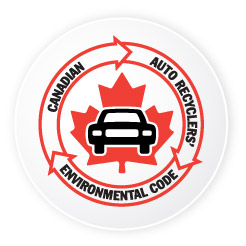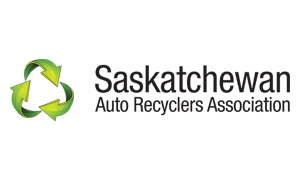 You may have heard that cars are the most recycled consumer product on Earth. It’s true, but that doesn’t always mean that each and every car is recycled properly in a way that safeguards the environment. To find out why, we need to look a little deeper into what we mean when we talk about automotive recycling.
You may have heard that cars are the most recycled consumer product on Earth. It’s true, but that doesn’t always mean that each and every car is recycled properly in a way that safeguards the environment. To find out why, we need to look a little deeper into what we mean when we talk about automotive recycling.
Depending on the vehicle, the best way to “recycle” it is to remove all of the parts that are in good condition and make them available for sale to motorists. This practice is actually “reuse” rather than “recycle” and is even better for the environment than recycling. The materials have already been acquired, processed, and formed into shape. All of the environmental costs have already been paid. Extending the life of those parts essentially means saving the cost of mining more ore, smelting it, etc.
Once the vehicle is stripped of useful parts, the remainder is processed and then typically sold as scrap. This is mostly steel, but automotive recyclers are seeing more and more aluminum, copper and precious metals. Metal recycling of all kinds is well-established, and its environmental benefits well understood. Every kilogram of steel salvaged from a car is roughly equivalent to 1.5 kilograms of iron ore that can be left in the ground. This also saves tremendously on the energy that would be used for smelting, manufacturing, etc.
These are both environmentally friendly practices in their own ways. However, the way some scrap car dealers go about those practices is anything but environmentally friendly. In addition to those useful parts and metal stock, vehicles contain various fluids, including engine oil, transmission and brake fluid, and coolant, that can cause environmental damage if they are allowed to spill or leak in to the environment.
As bad as this is, it can get worse. Cars built before 2002 often contain mercury switches in their convenience lighting systems. Mercury is incredibly toxic. A single switch, if not dealt with properly, can contaminate an entire lake. The switches are very small and easy to miss if you don’t know what you’re looking for…or you don’t care.
 The professional automotive recyclers serving the Retire Your Ride program have the knowledge, tools, and desire it takes to make sure your end-of-life vehicle is recycled properly, with no environmental damage from spilled fluids or ignored mercury switches.
The professional automotive recyclers serving the Retire Your Ride program have the knowledge, tools, and desire it takes to make sure your end-of-life vehicle is recycled properly, with no environmental damage from spilled fluids or ignored mercury switches.
When you use Retire Your Ride, you can rest easy knowing that your end-of-life vehicle will reach its final destination in the most environmentally responsible manner. You have this assurance because every recycler who participates in Retire Your Ride must abide by the Canadian Auto Recyclers’ Environmental Code (CAREC).
CAREC gives automotive recyclers the most up-to-date information and tools to prevent the hazardous materials contained in end-of-life vehicles from contaminating the ground, air, and water that we all depend on. Nor is the program a rubber stamp. All facilities are audited when they join the program to ensure they are following environmental best practice, and periodically audited again to make sure all of the latest directives are being followed.
CAREC is generally in line with all federal, provincial, and municipal regulations. If you were to place CAREC side-by-side with those regulations, you would notice that the main difference is that CAREC is considerably more stringent.
Retire Your Ride is the best program you can choose when your vehicle reaches the end of its life. Our bidding system ensures you get the best prices from local auto recyclers (always with a free tow) and you know that the car will be dealt with by professionals who take their responsibilities as environmental stewards seriously.
For more information on CAREC, please visit carec.ca. To start the process of retiring your ride, please click here.
The post CAREC ensures Auto Recycling is truly “Green” appeared first on Automotive Recyclers of Canada.
